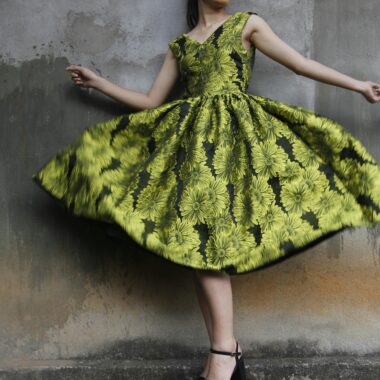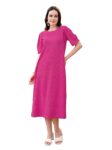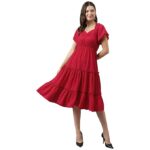Have you ever worn clothes that made you feel too hot, sticky, or sweaty? The truth is, clothes and heat regulation are directly connected. The fabrics you choose can make a big difference in how your body handles heat. Whether it’s a scorching summer day or you’re simply moving around a lot, the right clothing can regulate your body temperature, keep sweat away, and make you feel fresh and comfortable.
In this blog, we’ll explore how clothes affect heat regulation, the best fabrics to prevent overheating, which materials to avoid, and practical tips for dressing smart in hot or humid conditions.
Why Clothes and Heat Regulation Matter
Your body naturally controls its temperature through a process called thermoregulation. When you get hot, your body sweats to cool down. But when your clothes trap heat or block airflow, they interfere with this process, leading to:
- Excessive sweating
- Sticky, uncomfortable skin
- Heat rashes
- Body odor
- Dehydration
- In extreme cases, even heat exhaustion
Wearing the right fabrics allows sweat to evaporate and helps maintain a normal body temperature. That’s why clothes and heat regulation should be top of mind when choosing what to wear.
What Causes Clothes and Heat Regulation Problems?
Overheating happens when your clothes prevent heat release or trap sweat against your skin. The main causes include:
- Non-Breathable Fabrics – Polyester, nylon, and acrylic block airflow and trap sweat.
- Tight-Fitting Clothes – Restrict ventilation and trap moisture.
- Multiple Synthetic Layers – Increase body temperature and reduce breathability.
- Dark Colors – Absorb sunlight and make you feel hotter outdoors.
Why Sweat Builds Up with the Wrong Clothes
Sweat is your body’s natural cooling mechanism. But fabrics that trap moisture prevent sweat from evaporating. This causes:
- Wet, sticky clothes
- Chafing and rashes
- Bad odor from bacteria
- Increased body heat
Choosing breathable, sweat-wicking fabrics avoids these issues.
What Makes a Fabric Good for Heat and Sweat Control?
When it comes to clothes and heat regulation, the qualities of your fabric matter more than anything else. Look for these features in your summer wardrobe:
✅ Breathability – Lets air flow through the fabric.
✅ Moisture-Wicking – Pulls sweat away and dries quickly.
✅ Lightweight – Prevents heat buildup.
✅ Soft Texture – Gentle on skin, reducing irritation.
✅ UV Protection (Optional) – Blocks harmful sun rays.
Best Fabrics for Preventing Overheating and Sweat
- Cotton – Soft, breathable, and skin-friendly.
- Best for: casual wear, indoor use.
- Bamboo Fabric – Breathable, moisture-wicking, and antibacterial.
- Best for: outdoor wear, sleepwear, sensitive skin.
- Linen – Highly breathable, dries quickly, and feels cool.
- Best for: hot, humid climates.
- Tencel (Lyocell) – Smooth, breathable, and excellent at managing moisture.
- Best for: activewear and undergarments.
- Merino Wool – Surprisingly breathable, regulates temperature, and resists odor.
- Best for: outdoor activities and travel.
- Modal – Soft, stretchy, and sweat-absorbent.
- Best for: loungewear and intimate clothing.
Fabrics to Avoid if You Want to Stay Cool
- Polyester – Traps heat and odor.
- Nylon – Water-resistant but uncomfortable in heat.
- Acrylic – Retains heat like wool, but synthetic.
- Heavy Wool & Denim – Thick and non-breathable.
Tips for Choosing Heat-Friendly Clothes
- Wear light colors like white or pastels.
- Choose loose-fitting clothes for airflow.
- Stick to natural fibers like cotton, bamboo, and linen.
- Layer smartly with breathable base fabrics.
- Avoid plastic-coated or waterproof clothing unless needed.
Clothes for Specific Situations
- Sports/Active Wear – Use Tencel, merino wool, or performance blends. Avoid 100% cotton.
- Sleepwear – Cotton, bamboo, or modal for overnight comfort.
- Outdoor Wear – Linen or light cotton with UV protection.
- Babies & Kids – Organic cotton or bamboo; avoid thick fleece.
How Sweat and Overheating Affect Skin Health
Wrong clothing can cause:
- Heat rash (prickly heat)
- Chafing
- Fungal infections
- Body acne
- Itchy, irritated skin
Breathable clothes protect your skin and keep it healthy.
Caring for Sweat-Prone Clothes
- Wash after each wear.
- Use antibacterial detergent.
- Air-dry clothes.
- Avoid re-wearing damp clothes.
Sustainable Choices for Breathable Fashion
You can stay cool and eco-friendly with fabrics like:
- Organic cotton
- Bamboo
- Hemp
- Tencel
- Recycled fabrics
These options are better for the planet and gentler on skin. You can also explore breathable and sustainable fabric options at Desihatt for comfortable daily wear.
Sustainable fabrics are not just good for the Earth — they also improve clothes and heat regulation, making them a smart choice for both comfort and style.
Conclusion: Clothes and Heat Regulation for Everyday Comfort
Your clothes play a big role in how your body handles heat. Wearing breathable, sweat-wicking, and lightweight fabrics keeps you cool and comfortable, while avoiding synthetic, non-breathable fabrics helps prevent overheating.
In the end, smart choices in clothes and heat regulation help you stay comfortable, protect your skin, and keep your body temperature balanced. Dress smart, choose sustainable options, and let your skin breathe.
✨ Cool clothes = Cool body = Better comfort.







